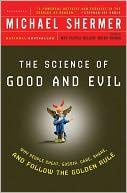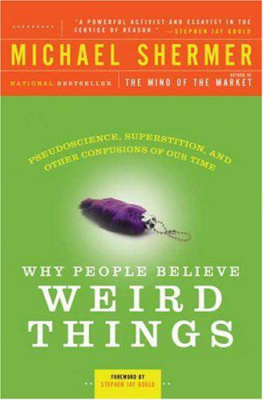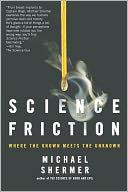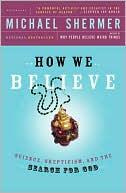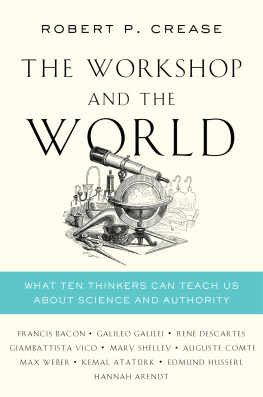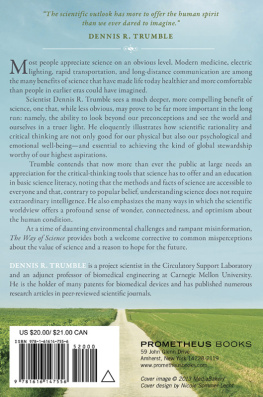Contents
Guide

The author and publisher have provided this e-book to you for your personal use only. You may not make this e-book publicly available in any way. Copyright infringement is against the law. If you believe the copy of this e-book you are reading infringes on the authors copyright, please notify the publisher at: us.macmillanusa.com/piracy.
To Jennifer
Unsterbliche Geliebte
Immortal Beloved
Forever thine
Forever mine
Forever us
CONTENTS
There must be no barriers to freedom of inquiry. There is no place for dogma in science. The scientist is free, and must be free to ask any question, to doubt any assertion, to seek for any evidence, to correct any errors. Our political life is also predicated on openness. We know that the only way to avoid error is to detect it and that the only way to detect it is to be free to inquire. And we know that as long as men are free to ask what they must, free to say what they think, free to think what they will, freedom can never be lost, and science can never regress.
J. ROBERT OPPENHEIMER, 1949
Sunday, March 21, 1965. Selma, Alabama.
About eight thousand people gather at Brown Chapel and begin to march from the town of Selma to the city of Montgomery, Alabama. The demonstrators are predominantly African American and theyre marching on the capitol for one reason: Justice. They want simply to be given the right to vote. But theyre not alone in their struggle. Demonstrators of every race, religion, and class, representing almost every state, have come to march with their black brothers and sisters. And at the front of the march is the Reverend Dr. Martin Luther King Jr., Nobel Prize winner, preacher, and civil rights activist, leading the march like Moses leading his people out of Egypt.
In the teeth of racial opposition backed by armed police and riot squads, they had tried to march twice before, but both times were met with violence by state troopers and a deputized posse. The first timeknown as Bloody Sundaythe marchers were ordered to turn back but refused and, as onlookers cheered, they were met with tear gas, billy clubs, and rubber tubing wrapped in barbed wire. The second time they were again met by a line of state troopers and ordered to turn around, and after asking for permission to pray, King led them back.
But not this time. This time President Lyndon B. Johnson, finally having seen the writing on the wall, ordered that the marchers should be protected by two thousand National Guard troops and federal marshals. And so they marched. For five days, over a span of fifty-three miles, through biting cold and frequent rain, they marched. Word spread, the number of demonstrators grew, and by the time they reached the steps of the capitol in Montgomery on March 25, their numbers had swelled to at least twenty-five thousand.
But King wasnt allowed on the steps of the capitolthe marchers werent allowed on state property. Sitting in the capitol dome like Pontius Pilate, Alabama governor George Wallace refused to come out and address the marchers, and Dr. King delivered his speech from a platform constructed on a flatbed truck parked on the street in front of the building.
It was one of the greatest speeches of Dr. Kings career, and arguably one of the greatest in the history of public oratory. And it worked. Less than five months later, on August 6, 1965, President Johnson signed the voting rights act into law. It was just as Dr. King had saidthe arc of the moral universe is long but it bends toward justice.
* * *
Dr. Kings referencethe title inspiration for this bookcomes from the nineteenth-century abolitionist preacher Theodore Parker, who penned this piece of moral optimism in 1853, at a time when, if anything, pessimism would have been more appropriate as America was inexorably sliding toward civil war over the very institution Parker sought to abolish:
I do not pretend to understand the moral universe; the arc is a long one, my eye reaches but little ways; I cannot calculate the curve and complete the figure by the experience of sight; I can divine it by conscience. And from what I see I am sure it bends towards justice.
In The Moral Arc my aim is to show that the Reverends Parker and King were rightthat the arc of the moral universe does indeed bend toward justice. In addition to religious conscience and stirring rhetoric, however, we can trace the moral arc through science with data from many different lines of inquiry, all of which demonstrate that in general, as a species, we are becoming increasingly moral. As well, I argue that most of the moral development of the past several centuries has been the result of secular not religious forces, and that the most important of these that emerged from the Age of Reason and the Enlightenment are science and reason, terms that I use in the broadest sense to mean reasoning through a series of arguments and then confirming that the conclusions are true through empirical verification.
Further, I demonstrate that the arc of the moral universe bends not merely toward justice, but also toward truth and freedom, and that these positive outcomes have largely been the product of societies moving toward more secular forms of governance and politics, law and jurisprudence, moral reasoning and ethical analysis. Over time it has become less acceptable to argue that my beliefs, morals, and ways of life are better than yours simply because they are mine, or because they are traditional, or because my religion is better than your religion, or because my God is the One True God and yours is not, or because my nation can pound the crap out of your nation. It is no longer acceptable to simply assert your moral beliefs; you have to provide reasons for them, and those reasons had better be grounded in rational arguments and empirical evidence or else they will likely be ignored or rejected.
Historically, we can look back and see that we have been steadilyalbeit at times haltinglyexpanding the moral sphere to include more members of our species (and now even other species) as legitimate participants in the moral community. The burgeoning conscience of humanity has grown to the point where we no longer consider the well-being only of our family, extended family, and local community; rather, our consideration now extends to people quite unlike ourselves, with whom we gladly trade goods and ideas and exchange sentiments and genes rather than beating, enslaving, raping, or killing them (as our sorry species was wont to do with reckless abandon not so long ago). Nailing down the cause-and-effect relationship between human action and moral progressthat is, determining why it has happenedis the other primary theme of this book, with the implied application of what we can do to adjust the variables in the equation to continue expanding the moral sphere and push our civilization further along the moral arc.
Improvements in the domain of morality are evident in many areas of life: governance (the rise of liberal democracies and the decline of theocracies and autocracies); economics (broader property rights and the freedom to trade goods and services with others without oppressive restrictions); rights (to life, liberty, property, marriage, reproduction, voting, speech, worship, assembly, protest, autonomy, and the pursuit of happiness); prosperity (the explosion of wealth and increasing affluence for more people in more places; and the decline of poverty worldwide in which a smaller percentage of the worlds people are impoverished than at any time in history); health and longevity (more people in more places more of the time live longer, healthier lives than at any time in the past); war (a smaller percentage of people die as a result of violent conflict today than at any time since our species began); slavery (outlawed everywhere in the world and practiced in only a few places in the form of sexual slavery and slave labor that are now being targeted for total abolition); homicide (rates have fallen precipitously from over 100 murders per 100,000 people in the Middle Ages to less than one per 100,000 today in the industrial West, and the chances of an individual dying violently is the lowest it has ever been in history); rape and sexual assault (trending downward, and while still too prevalent, it is outlawed by all Western states and increasingly prosecuted); judicial restraint (torture and the death penalty have been almost universally outlawed by states, and where it is still legal is less frequently practiced); judicial equality (citizens of nations are treated more equally under the law than at any time in the past); and civility (people are kinder, more civilized, and less violent to one another than ever before).


